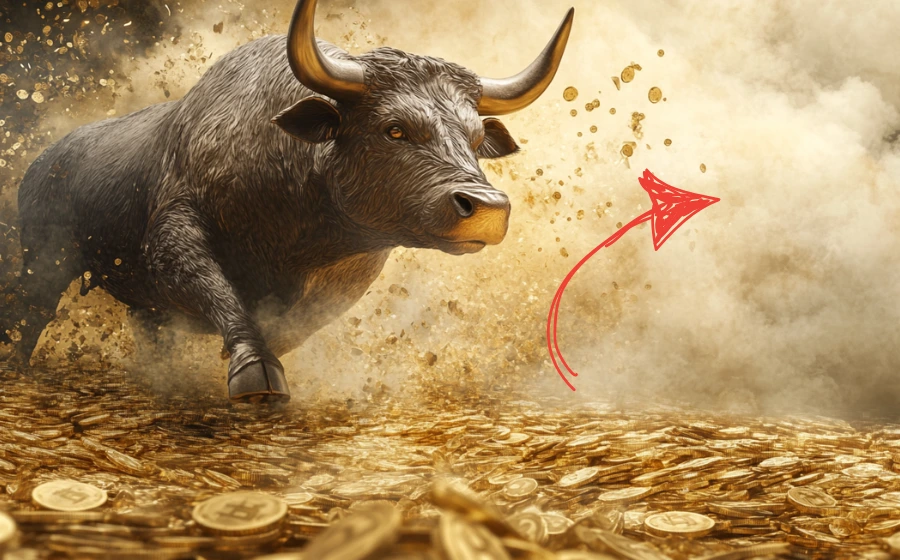
KEYTAKEAWAYS
- Market makers ensure liquidity by quoting both buy and sell prices, maintaining efficient and smooth trading with tight bid-ask spreads.
- They make money from the bid-ask spread, exchange incentives, and arbitrage trading, leveraging advanced algorithms and high-frequency trading strategies.
- While market makers stabilize prices, they may engage in manipulative practices like spoofing or using information advantages, potentially misleading retail traders.

CONTENT
Market makers are fundamental players in financial markets, providing the necessary liquidity that keeps the market flowing smoothly. However, while they are crucial for maintaining a stable and efficient market, concerns have been raised about the potential for market manipulation for their own advantage. This article dives deeper into how market makers operate, how they make money, and the positive and negative effects they can have on the market.
HOW DO MARKET MAKERS OPERATE?
Market makers are crucial for ensuring liquidity, which is the ability to quickly buy or sell an asset without significantly affecting its price. By consistently offering both buy and sell prices, they allow market participants to trade with ease. Here’s a breakdown of how they function:
1.Quoting Buy and Sell Prices
A market maker’s core function is to continuously quote two prices for an asset:
•Bid Price (Buy Price): The price at which they are willing to purchase the asset.
•Ask Price (Sell Price): The price at which they are willing to sell the asset.
These prices are quoted simultaneously to ensure there are always willing buyers and sellers in the market. The difference between the bid and ask prices is called the spread, which is the primary mechanism through which market makers profit.
For example, if the bid price for Bitcoin is $50,000 and the ask price is $50,020, traders can buy or sell at these prices. The market maker profits from the difference of $20 per Bitcoin in this case.
2.Managing Inventory
Market makers hold a certain amount of assets in their inventory. Their role is to manage these holdings efficiently to avoid large-scale losses. When more traders are selling than buying, market makers may lower their bid prices, or if there is more buying pressure, they may raise their ask prices. Additionally, market makers may adjust their holdings or hedge their positions across multiple exchanges to ensure they don’t become too exposed to price fluctuations in one particular asset.
Market makers often manage their inventory through sophisticated strategies, aiming to balance their risk while maintaining enough liquidity for the market. This means they constantly adjust their prices and inventory in response to market conditions.
3.Algorithms and High-Frequency Trading
The use of algorithms has become increasingly widespread in modern market making. Most market makers now rely on high-frequency trading (HFT) algorithms, which can update quotes and execute trades in milliseconds. These algorithms respond to changes in market conditions in real time, ensuring that the market maker always stays competitive.
HFT algorithms enable market makers to handle massive volumes of trades while remaining nimble enough to adjust prices in response to rapid fluctuations in market supply and demand. This allows them to maintain their profitability and offer liquidity in virtually any market condition.
HOW DO MARKET MAKERS MAKE MONEY?
Market makers earn profits in several ways, primarily through the bid-ask spread, but also by leveraging incentives from exchanges and exploiting market inefficiencies. Here are the main ways they generate income:
1.profit From the Bid-Ask Spread
The most straightforward way for market makers to make money is by earning the difference between the bid and ask prices. As an example, if they buy Bitcoin at $50,000 (bid) and sell it at $50,020 (ask), they earn a $20 profit per Bitcoin. This may seem like a small amount, but when a market maker conducts thousands of trades every day, those profits accumulate.
The larger the spread between the bid and ask prices, the more a market maker can potentially earn. However, market makers often keep spreads tight to ensure they remain competitive in the market.
2.Incentives From Exchanges
Exchanges value market makers because they provide liquidity, which is essential for maintaining a healthy trading environment. As a result, many exchanges offer rebates or reduced trading fees to market makers as an incentive. These incentives can make market making an even more profitable endeavor.
Market makers help attract traders to the platform, thereby improving the exchange’s overall trading volume. In exchange for providing liquidity, they benefit from lower transaction costs, making their operations more profitable.
3.Arbitrage Trading
Market makers also take advantage of price differences between exchanges through arbitrage trading. If Bitcoin is trading at $50,000 on one exchange and $50,100 on another, market makers can buy Bitcoin on the cheaper exchange and sell it on the more expensive one, pocketing the price difference.
This process happens automatically through algorithms, enabling market makers to exploit these inefficiencies quickly and efficiently.
HOW DO MARKET MAKERS AFFECT THE MARKET?
Market makers play a significant role in the overall functioning of the financial markets, with both positive and negative impacts.
1.Positive Effects
•Liquidity Provision: Market makers ensure there is always a buyer and a seller, preventing market stagnation. This helps traders execute their orders more efficiently and at competitive prices.
•Lower Trading Costs: Tight bid-ask spreads, which market makers often maintain, reduce the hidden costs of trading. This is beneficial for retail investors as they pay less in the form of slippage.
•Price Stability: When market makers provide deep liquidity, the market becomes less sensitive to large trades. This helps maintain more stable prices, especially during periods of volatility.
2.Potential Risks and Manipulation
Despite their essential role, market makers may also engage in questionable practices, which can lead to manipulation or unfair advantages.
•Fake Liquidity: Some market makers place large buy or sell orders on the order book but cancel them before they are executed. This creates an illusion of liquidity, tricking other market participants into thinking there is more supply or demand than there really is.
•Spoofing: Similar to fake liquidity, spoofing occurs when a market maker places large orders to mislead other traders about market sentiment and then cancels them before they are filled.
•Information Advantage: Because market makers have access to a wealth of data, they can use this information to anticipate trades and make decisions faster than regular traders. This gives them an edge in executing profitable trades.
•High-Frequency Trading (HFT) Abuse: HFT algorithms are designed to make thousands of trades per second. This gives market makers an advantage over regular investors, who may struggle to keep up with the rapid pace and constantly changing prices.
HOW TO IDENTIFY MARKET MAKER ACTIVITY?
While market makers perform important functions, it’s crucial for traders to be aware of their potential influence on the market. Here are some signs to watch for:
•Order Book Patterns: If large orders appear on the order book but are never filled, it could be a sign of fake liquidity or spoofing.
•Unusual Trading Volume: A sudden spike in volume without a corresponding price change could indicate market maker activity influencing the market.
•Price Manipulation: Rapid price fluctuations within seconds or minutes may suggest that HFT algorithms are in play.
•Price Differences Across Exchanges: If there are significant price differences for the same asset on different exchanges, it might indicate that market makers are exploiting arbitrage opportunities.
CONCLUSION
Market makers are vital for the functioning of financial markets. They provide liquidity, help lower trading costs, and stabilize prices, making markets more efficient. However, market makers can also engage in practices that mislead traders or give them an unfair advantage.
For retail investors, understanding how market makers operate and recognizing their potential influence on the market is key to navigating the financial world. Transparency and informed decision-making are essential for making smarter, more strategic trades in today’s complex financial landscape.
This version has the section titles in uppercase for better readability and structure. Let me know if you need further adjustments!













